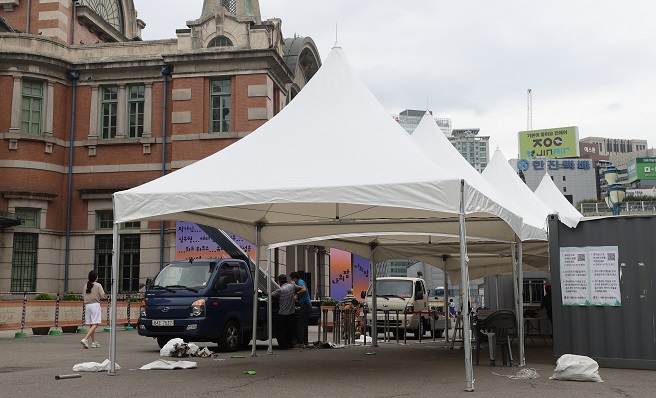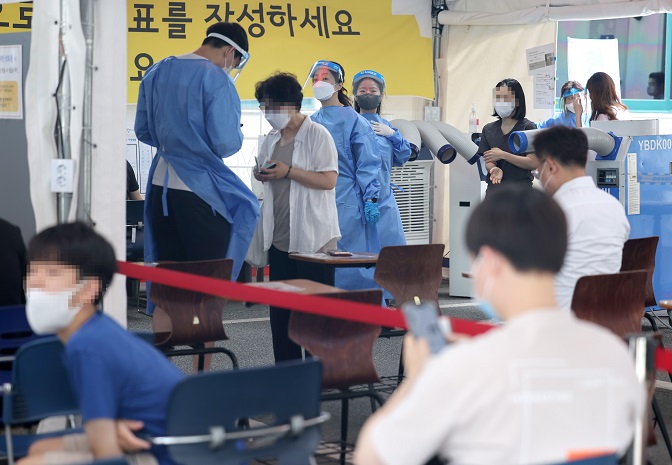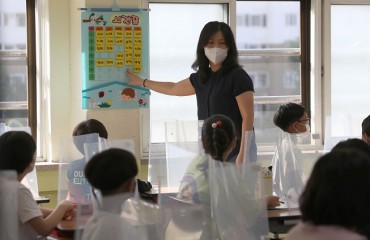
A makeshift COVID-19 testing facility is being built on July 21, 2022, amid the spread of an omicron subvariant. (Yonhap)
SEOUL, July 22 (Korea Bizwire) — South Korea’s new coronavirus cases fell below 70,000 Friday but are nearly 10 times higher than a month ago amid the spread of a highly contagious omicron subvariant.
The country reported 68,632 new COVID-19 infections, including 323 from overseas, bringing the total caseload to 19,077,659, the Korea Disease Control and Prevention Agency (KDCA) said.
Friday’s tally is 9.5 times higher than 7,218 cases on June 24.
The daily caseload more than doubled to 73,582 on Tuesday from 26,299 a day earlier and rose to 76,402 Wednesday and 71,170 Thursday.
The omicron subvariant BA.5 has spread fast since end-June with the start of the summer holiday season. The daily count hit over 10,000 on June 29 for the first time in about three weeks before jumping to over 20,000 on July 9 and then above 40,000 on July 13.
The KDCA reported 31 deaths from the virus Friday, putting the death toll at 24,825. The fatality rate stood at 0.13 percent.
The number of critically ill patients was 130, jumping from 107 a day earlier.
As of 9 p.m. Friday, the country had reported 65,972 additional cases, down 519 from the same time Thursday and 1.67 times the number from a week ago. Daily cases are counted until midnight and announced the following morning.

This photo taken July 22, 2022, shows people waiting to take a COVID-19 test at a clinic in Gangnam, southern Seoul. (Yonhap)
The country has entered a new virus wave, ending a downward trend from the peak of more than 620,000 in mid-March, the health agency said, adding daily infections could surge to over 200,000 next month.
The subvariant accounted for 52 percent of the country’s total COVID-19 cases, including cases from overseas, in the third week of July, up from the first week’s 24 percent, the KDCA said.
To keep the virus from spreading further, the government recommended fourth COVID-19 vaccine shots for people aged 50 and older, as well as people aged 18 and older who have underlying health problems, starting Monday.
Previously, people aged 60 and older, and people who have an immune disorder were eligible for the fourth vaccine dose.
The government also plans to expand the number of “one-stop” COVID-19 treatment centers by the end of July, where people can take virus tests, get in-person medical care services and receive antiviral drugs, to 10,000 from about 6,400 currently.
The move comes as the nation is facing another resurgence of the virus, driven by the omicron strain BA.5, which is known to be more contagious and better able to escape immunity compared with earlier versions.
(Yonhap)






